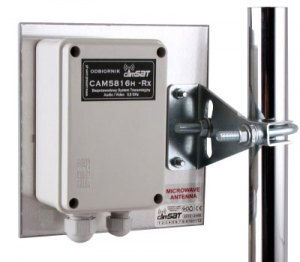Wireless transmission in CCTV installation

Wireless transmitter
CCTV, as we know today is a very effective surveillance medium for the silent monitoring and observation it provides to curious people at a remote place and allows efficient manning of any dangerous situation. It can be with alerts, with counter measures or with prevention through segregation. The device is now integral to almost any security effort at any public place. Rail stations, airports even now the highly sensitive roads and traffic ways are also being monitored through CCTV to get on the go intimation of any adverse situation. In this context it is also question-worthy that whether it is possible to man every CCTV terminal even in highways and skyscrapers, if now how can the benefits yielded for common good? Transmission of the images at selected consoles is the solution and we can ponder on this considering the obstacles we face in setting up a successful CCTV surveillance system and the corresponding transmission systems.
For remote wireless transmission there can be roughly these methods. Radio frequency video transmission, Microwave links, Infrared wireless video transmission. They are three distinct and individual methods each with their situations of benefits and drawbacks.
RF Video Transmission
This is a radio wave (electromagnetic wave) which travels at speed of light and can be instantly reached to most of the CCTV monitoring systems. The reception point which takes the videos through the TV sends the images through a transmitter to the point of surveillance and there it is taken in a receiver. For this complete transmission to happen there are some conditions for clear and noiseless video quality. First is the frequency which is transmitted and received. The wave is capable to travel enough distance necessary in CCTV monitoring and in that sense it is good if only we keep the path of travel restriction free. Modulation of the wave though is necessary as the high frequency makes for small wavelength and that is not very suitable for transmission and there can be both audio and video transmission with two different modulations to keep one free from the other’s interference. The frequency is also very similar to TV transmission and so there can be interferences or receptions on TVs in the path of travel of the frequency. This is one of the drawbacks of RF transmission but this is also very effectively used in apartments or big buildings where the residents can look into the security cameras by merely tuning their TVs to certain channels matching with this frequency; that can be a selected method of monitoring in residential buildings. Te wave has a property of travelling on the surface of the conductor and that can increase the interference created by them. Though there are similarities with microwave transmission for the wave, there is no need for direct line of site to get easy video without interference. Most of the transmission can go through non metal objects of medium density and thickness and this is one advantage that makes it stand apart from other transmission waves.
Would you like to learn more? why not join our next CCTV installation course?
